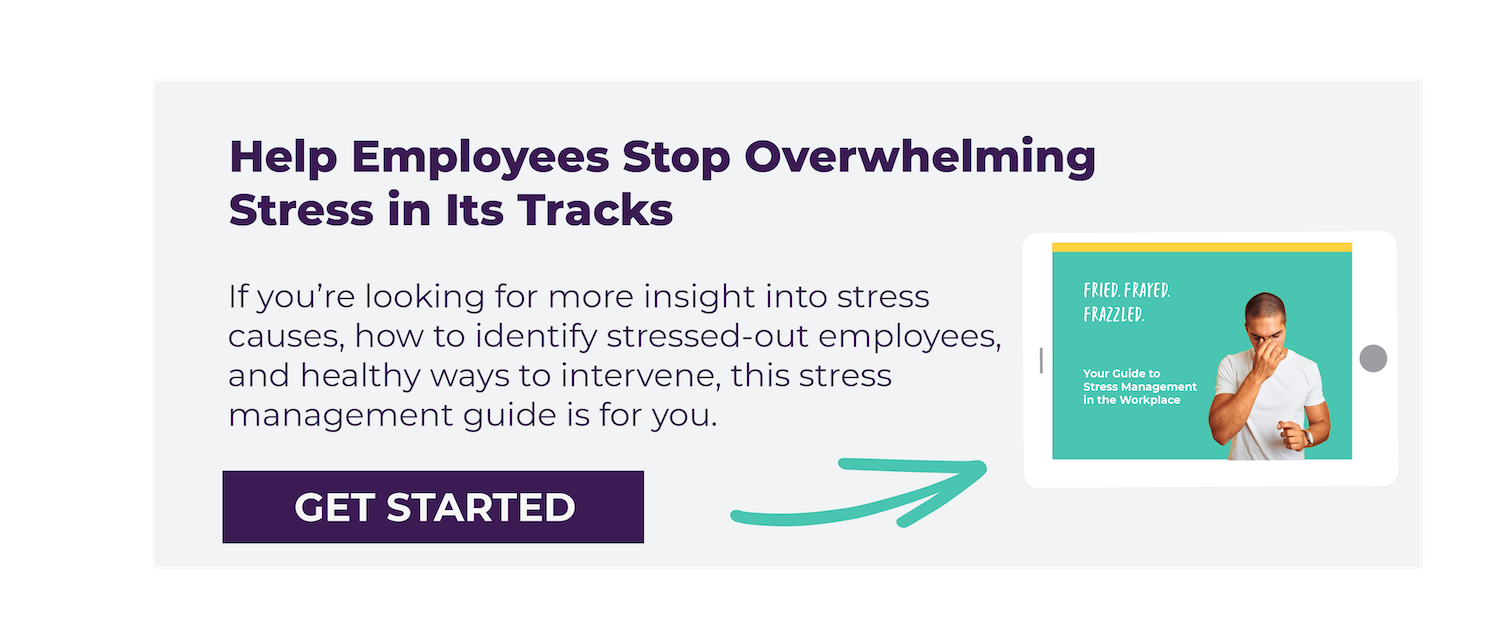 What do healthy boundaries at work look like?
What do healthy boundaries at work look like?
For some company cultures that thrive on fast and furious work ethic, boundaries often fail to exist. Employees may be expected to pick up their phone at all hours of the night; break times are unheard of or not implemented, and more.
Setting boundaries can be a challenging and uncomfortable move for many leaders and even their employees. But, in order to have a thriving work environment, it's a must to keep both bad behavior and other bad habits in check. It also keeps the workplace healthier and a safe place for other employees to thrive in.
This post takes a look at the importance of boundaries, why they matter at work, and ways to uphold them even when it’s hard.
What are Boundaries?
A boundary is a term that gets bounced around a lot, but not everyone understands that it can encompass physical, emotional, and mental limits. These are created by individuals to protect themselves from being used, over-committing, or behaving unethically in any given situation.
One important aspect to know about boundaries is that every person gets to decide their own boundaries. It’s what matters to them and the lines they won’t cross or allow others to cross in their personal and professional lives.
Why Do Healthy Boundaries at Work Matter?
In a world where the line blurs easily between work life and home life, it’s essential for both employees and employers to know where the boundaries lie. This not only protects precious employee time but also helps workers to be better engaged when they actually are meant to be working.
While the word boundaries at first glance may seem a limiting way to live, it’s actually a way for individuals — and organizations — to gain confidence, stress less, and work more efficiently.
“Workers with greater boundary control over their work and personal lives were better at creating a stress buffer to prevent them from falling into a negative rumination trap,” according to recent research from the University of Illinois at Urbana-Champaign.
Creating clear boundaries can set a healthier workplace tone and increase productivity. Because boundaries are personal, each person should set their own and expect that others will have their own boundaries, too. There may also be intellectual and time boundaries that colleagues set as well to protect their creative processes and production modes.
Many organizations may also have sets of rules regarding conduct and what’s expected in the workplace. While they aren’t directly called boundaries, that’s essentially what those specific behavioral rules are in an employee handbook. It ensures everyone is on the same page and what the consequences are if the boundaries aren’t upheld by employees and even leadership.
Professional boundaries can be particularly helpful for new hires. For example, making it clear from week one who a new employee answers to, turns projects into, gets feedback from, etc. This prevents unnecessary delegators from stepping in and handing off work.
Other examples of work boundaries worth setting include:
- Unplugging - It’s essential for workers to truly take time off. Creating a policy around unplugging from email or phone calls after hours can help with resetting from work mode.
- Respecting the calendar - If someone has mornings blocked off for deep work, meetings, personal development, etc. it’s important to refer to that when trying to schedule meetings with them or on their behalf. Being respectful of the set working hours of your colleagues ensures that meetings don’t get overlooked because they weren’t expecting them to be there during a blocked calendar time, for example.
- One person at a time - Meetings can get hectic if they aren’t run appropriately. Have a strict policy that only one person at a time may have the floor to speak so there aren’t interruptions and misunderstandings. A manager may intercept those who interrupt to hold this as a firm boundary in the workplace. Allowing others to speak freely also builds trust and shows mutual respect.
- Take breaks - With hybrid and work-from-home becoming the norm, it’s important to realize not everyone is going to be at their computers for eight hours straight. It’s not like that in the workplace and it shouldn’t be that way for home workers, either. Set expectations for when workers need to be at computers if working from home (say, for the weekly meeting) but ensure that break times are respected by all — leaders and colleagues.
Direct is best when it comes to boundary setting, especially in the workplace. If unhealthy boundaries persist, it can lead to resentment, dependency, anxiety, stress, and more.
Important note: If you are dealing with someone who is threatening you, it may not be safe to attempt to set explicit boundaries with them. If this is another coworker, work with your human resources department or a counselor to create a smart safety plan.
Useful Skills for Holding Boundaries at Work
Setting boundaries can feel uncomfortable and hard. This is especially true if a workplace changes rules and policies and starts enforcing them. For workers, learning to set up boundaries with colleagues can also feel challenging, especially in tight-knit companies.
But boundaries are important to set, especially if it impacts workflow. For example, an overly chatty coworker who likes to spend too much time interrupting others’ work may need a colleague (or two) to tell them nicely it’s time for everyone to focus on work.
While it’s one thing to know boundaries, it’s an entirely different thing to stick to them.
Here are some tips for holding healthy boundaries at work:
- Know the limits - For a workplace code of conduct policy change, make sure employees are given plenty of notice — and reminders — on when the change is happening. For example, if an employee starts texting during meetings, they may be kindly asked to leave to take care of personal business if that’s the case. For professional individual boundaries, knowing what you feel comfortable with can make it easier to hold firm when boundaries are tested.
- Communicate - No one is a mind reader. This is where holding boundaries can be hard for people who don’t desire confrontation. A common example might be letting colleagues know that you don’t have the capacity to take on any more work or perhaps you can only help with a specific part of a project. Be willing to vocalize.
- Practice - To continue setting healthy boundaries, it is important to stay consistent in what’s acceptable or not. This is true for both workplace policies and for individuals that work at your company. Being assertive enough to continue to practice boundary holding shows that values, needs, and beliefs matter more than others’ opinions.
Perhaps one of the most important aspects of boundary setting is just doing it and doing it with consistency. Verbal boundary setting needs to be done clearly, firmly, calmly, and respectfully. Additionally, using as few words as possible can make boundary-setting particularly helpful. There is also no reason to apologize or justify setting the boundary. It may come off as abrasive or rude, but when it comes to boundaries, it’s always a personal preference and choice and isn’t for other people to approve of or like.
Need more inspiration on setting boundaries with others? Check out The Set Boundaries Workbook: Practical Exercises for Understanding Your Needs by Nedra Glover Tawwab and other similar material through your favorite library, book store, or audiobook download.
How does your workplace set boundaries? What does it look like for you as an employee to set boundaries? Share your insights down below!



